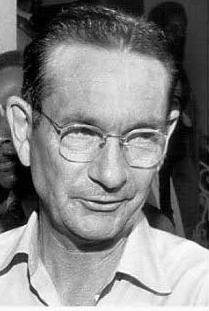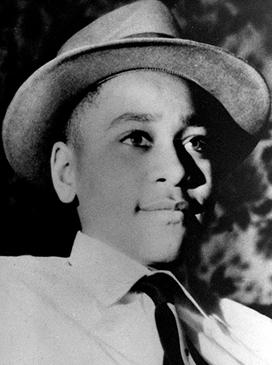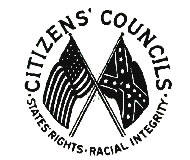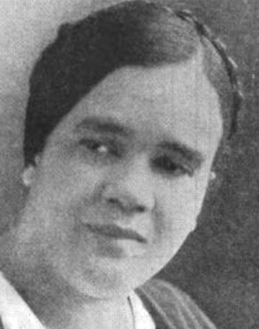Related Research Articles

James Howard Meredith is an American civil rights activist, writer, political adviser, and United States Air Force veteran who became, in 1962, the first African-American student admitted to the racially segregated University of Mississippi after the intervention of the federal government. Inspired by President John F. Kennedy's inaugural address, Meredith decided to exercise his constitutional rights and apply to the University of Mississippi. His goal was to put pressure on the Kennedy administration to enforce civil rights for African Americans. The admission of Meredith ignited the Ole Miss riot of 1962 where Meredith's life was threatened and 31,000 American servicemen were required to quell the violence - the largest ever invocation of the Insurrection Act of 1807.

Medgar Wiley Evers was an American civil rights activist and the NAACP's first field secretary in Mississippi, who was murdered by Byron De La Beckwith. Evers, a decorated U.S. Army combat veteran who had served in World War II, was engaged in efforts to overturn segregation at the University of Mississippi, end the segregation of public facilities, and expand opportunities for African Americans including the enforcement of voting rights.

Byron De La Beckwith Jr. was an American murderer, white supremacist and a member of the Ku Klux Klan from Greenwood, Mississippi who murdered the civil rights leader Medgar Evers on June 12, 1963. Two trials in 1964 on that charge, with all-white Mississippi juries, resulted in hung juries. In 1994, he was tried by the state in a new trial which was based on new evidence. He was convicted of murder and sentenced to life in prison.

Emmett Louis Till was an African American boy who was abducted, tortured, and lynched in Mississippi in 1955 at the age of 14, after being accused of offending a white woman, Carolyn Bryant, in her family's grocery store. The brutality of his murder and the acquittal of his killers drew attention to the long history of violent persecution of African Americans in the United States. Till posthumously became an icon of the civil rights movement.

The Citizens' Councils were an associated network of white supremacist, segregationist organizations in the United States, concentrated in the South and created as part of a white backlash against the US Supreme Court's landmark Brown v. Board of Education ruling. The first was formed on July 11, 1954. The name was changed to the Citizens' Councils of America in 1956. With about 60,000 members across the Southern United States, the groups were founded primarily to oppose racial integration of public schools: the logical conclusion of the Brown v. Board of Education ruling.

Fannie Lou Hamer was an American voting and women's rights activist, community organizer, and a leader in the civil rights movement. She was the vice-chair of the Freedom Democratic Party, which she represented at the 1964 Democratic National Convention. Hamer also organized Mississippi's Freedom Summer along with the Student Nonviolent Coordinating Committee (SNCC). She was also a co-founder of the National Women's Political Caucus, an organization created to recruit, train, and support women of all races who wish to seek election to government office.

Rainbow/PUSH is a Chicago-based nonprofit organization formed as a merger of two nonprofit organizations founded by Jesse Jackson; Operation PUSH and the National Rainbow Coalition. The organizations pursue social justice, civil rights, and political activism.
Operation Breadbasket was an organization dedicated to improving the economic conditions of black communities across the United States. Operation Breadbasket was launched on February 11, 1966, under the leadership of Jesse Jackson. Its primary objective was to promote the employment of African Americans by companies operating in black communities and support the growth of black-owned businesses. Dr. Martin Luther King Jr. described the core principle of Breadbasket as the belief that African Americans should not support businesses that denied them job opportunities, career advancement, or basic courtesy. To achieve their goals, the activists of Operation Breadbasket adopted a strategy called "selective patronage." They focused their initial campaign on dairy companies and supermarket chains. They organized pickets and encouraged boycotts of stores that carried products from the targeted companies, aiming to pressure them into improving their employment practices and support for the black community.

The California Eagle (1879–1964) was a newspaper in Los Angeles for African Americans. It was founded as The Owl in 1879 and later The Eagle by John J. Neimore. Charlotta Bass became owner of the paper after Neimore's death in 1912. She owned and operated the paper, renamed the California Eagle, until 1951. Her husband, J. B. Bass, served as editor until his death in 1934. In the 1920s, they increased circulation to 60,000. Bass was also active as a civil rights campaigner in Los Angeles, working to end segregation in jobs, housing and transportation.

Theodore Roosevelt Mason Howard was an American civil rights leader, fraternal organization leader, entrepreneur and surgeon. He was a mentor to activists such as Medgar Evers, Charles Evers, Fannie Lou Hamer, Amzie Moore, Aaron Henry, and Jesse Jackson, whose efforts gained local and national attention leading up to the civil rights movement of the 1960s.

George Wesley Lee was an African-American civil rights leader, minister, and entrepreneur. He was a vice president of the Regional Council of Negro Leadership and head of the Belzoni, Mississippi, branch of the National Association for the Advancement of Colored People. He was assassinated in 1955 in retaliation for his efforts to register African Americans to vote. Since 1890 they had been effectively disenfranchised in Mississippi due to a new state constitution; other states across the South passed similar acts and constitutions, excluding millions of people from the political system and establishing one-party states.

Aaron Henry was an American civil rights leader, politician, and head of the Mississippi branch of the NAACP. He was one of the founders of the Mississippi Freedom Democratic Party which tried to seat their delegation at the 1964 Democratic National Convention.

Charles Coles Diggs Jr. was an American politician from the U.S. state of Michigan who served in the state senate and U.S. House of Representatives. He was the first African American elected to Congress from Michigan.
David T. Beito is a historian and professor of history at the University of Alabama.

Arenia Conelia Mallory was an American educator based in Lexington, Mississippi. She was recognized nationally as a political activist working for African-American education and civil rights. She gained a national reputation as president of Saints Industrial and Literary School, which she developed over 50 years from a few students in 1926 to a private K-12 academic school and junior college on 350 acres. It was affiliated with the Pentecostal Church of God in Christ, in which Mallory had been active since about age 18.
Linda Royster Beito is professor of political science and criminal justice at Stillman College in Tuscaloosa, Alabama.
The Tri-State Defender is a weekly African-American newspaper serving Memphis, Tennessee, and the nearby areas of Arkansas, Mississippi and Tennessee. It bills itself as "The Mid-South's Best Alternative Newspaper". The Defender was founded in 1951 by John H. Sengstacke, owner of the Chicago Defender. In 2013, the paper was locally purchased from Real Times Media by Best Media Inc.
The Mississippi Enterprise was one of two African American newspapers in Jackson, Mississippi. Arrington High worked at the paper. Publication years include 1939–1980. The paper covered lynchings and murders of African Americans. It advocated for African Americans to support African-American businesses in Mound Bayou, Mississippi, a historically African-American community founded by freed slaves. The Library of Congress has an archive of the paper.
The Jackson Eagle Eye was a newspaper for African Americans published by Arrington High in Jackson, Mississippi.
References
- 1 2 3 4 5 6 Walton, Becca. "Jackson Eagle Eye". Mississippi Encyclopedia. Retrieved 2019-11-07.
- ↑ Thompson, Julius Eric (2001). Black Life in Mississippi: Essays on Political, Social, and Cultural Studies in a Deep South State. University Press of America. p. 28. ISBN 9780761819226.
- ↑ Houck, Davis W.; Grindy, Matthew A. (2008). Emmett Till and the Mississippi Press. Univ. Press of Mississippi. p. 8. ISBN 9781604733044.
- ↑ Beito, David T.; Beito, Linda Royster (2009). Black Maverick: T.R.M. Howard's Fight for Civil Rights and Economic Power. University of Illinois Press. pp. 105–106. ISBN 9780252034206.
- 1 2 "Crusading Publisher Who Fled Mississippi In Casket Dies; Returns For Burial". Jet. Johnson Publishing Company. 1988-05-16. p. 64.
- ↑ Shakoor, Jordana Y. (2010-12-01). Civil Rights Childhood. Univ. Press of Mississippi. p. 73. ISBN 9781617030925.
- ↑ Thompson, Julius Eric (2007). Lynchings in Mississippi: A History, 1865-1965. McFarland. p. 149. ISBN 9780786427222.
- ↑ Simmons, Charles A. (2006-01-17). The African American Press: A History of News Coverage During National Crises, with Special Reference to Four Black Newspapers, 1827-1965. McFarland. p. 63. ISBN 9780786426072.
- ↑ Thompson, Julius Eric (1994). Percy Greene and the Jackson advocate: the life and times of a radical conservative black newspaperman, 1897-1977. McFarland & Company Incorporated Pub. p. 181. ISBN 9780786400157.
- ↑ Suggs, Henry Lewis (1983). The Black Press in the South, 1865-1979. Greenwood Press. pp. 188, 205. ISBN 9780313222443.
- 1 2 "Jackson Eagle Eye". Mississippi Encyclopedia.
- ↑ "High, Arrington W., 1910-". crdl.usg.edu.
- ↑ Beito, David T.; Beito, Linda Royster (October 29, 2009). Black Maverick: T.R.M. Howard's Fight for Civil Rights and Economic Power. University of Illinois Press. ISBN 9780252034206 – via Google Books.
- ↑ Wilkerson, Isabel (October 29, 2010). The Warmth of Other Suns: The Epic Story of America's Great Migration . Random House. p. 353. ISBN 9780679444329 – via Internet Archive.
Arrington High.
- ↑ Company, Johnson Publishing (May 16, 1988). "Jet". Johnson Publishing Company – via Google Books.